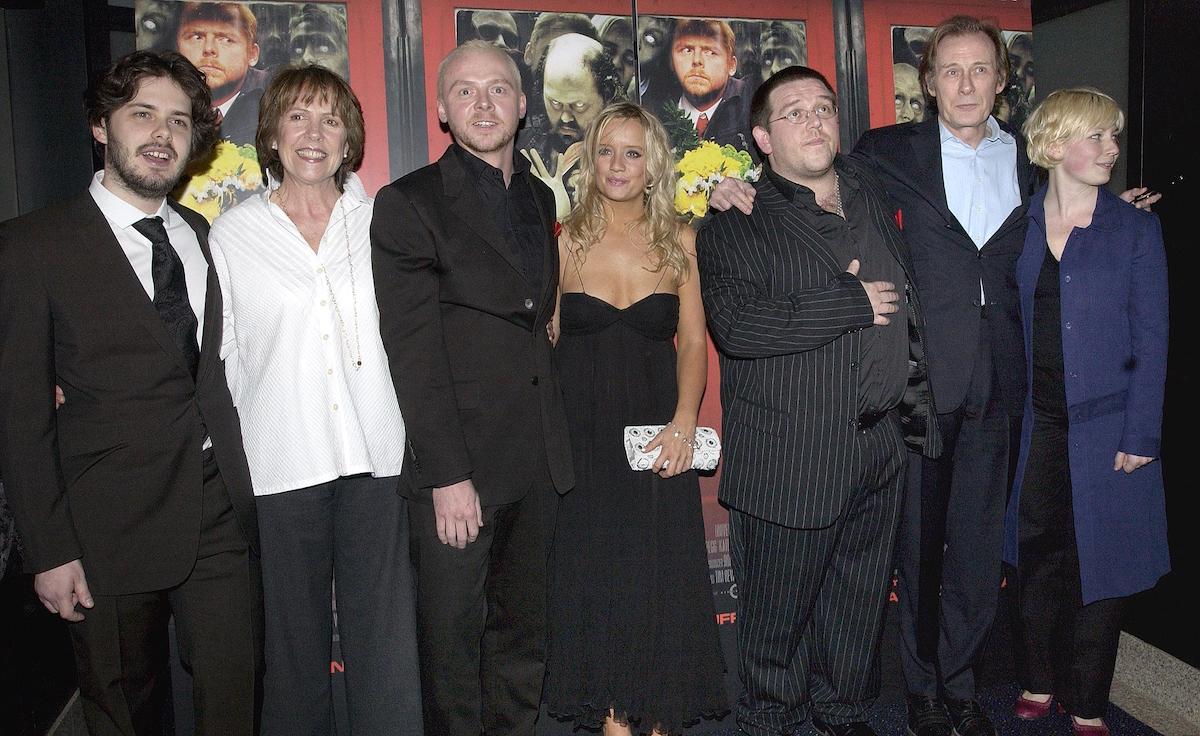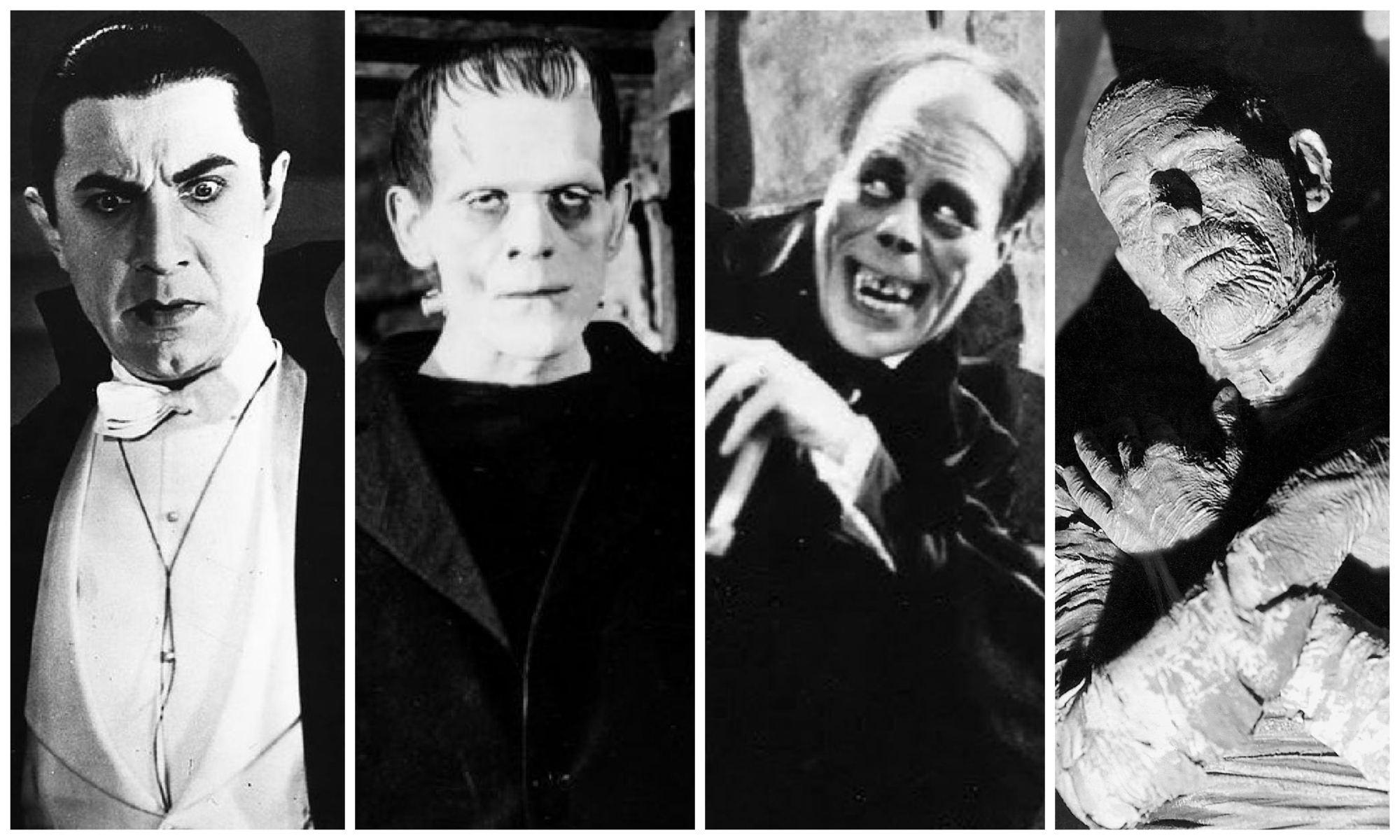Shaun of the Dead Defined the Modern Nerd Movie for Better and Worse
Shaun and his best mate Ed are in trouble. They’ve discovered two zombies in their garden, and the lumbering flesh-eaters show no signs of stopping. However, Shaun and Ed have found one way of slowing the approach: throwing records. And so, as the two zombies grow closer, Ed and Shaun rustle through the latter’s collection. […] The post Shaun of the Dead Defined the Modern Nerd Movie for Better and Worse appeared first on Den of Geek.

Shaun and his best mate Ed are in trouble. They’ve discovered two zombies in their garden, and the lumbering flesh-eaters show no signs of stopping. However, Shaun and Ed have found one way of slowing the approach: throwing records.
And so, as the two zombies grow closer, Ed and Shaun rustle through the latter’s collection. “Sign o’ the Times … Purple Rain,” Ed suggests as projectiles, only to have Shaun tell him no. That is until Ed reaches a low point in Prince’s discography, the Batman soundtrack. “Throw it,” Shaun commands, striking a blow against the living dead.
The above scene is just one instance of the humor and horror that director Edgar Wright and his co-writer Simon Pegg bring to the RomZomCom Shaun of the Dead, released twenty years ago. Shaun (Pegg) and Ed (Nick Frost) spend a lot of time discussing their pop-cultural interests, even in the most dire situations. In doing so, Shaun of the Dead blazed a trail of nerd-literate films, one that none of its many copycats have yet matched.
The Plague of Nerd Cinema Dominance
Shaun of the Dead was hardly the first example of nerd knowledge taking center stage in a movie or tv show. Before making feature films, Pegg co-created the television series Spaced with co-star Jessica Stevenson, and Wright directed every episode. The series followed the faux-love life of Daisy (Stevenson) and comic book artist Tim (Pegg), who pretend to be a young married couple to secure a nice flat rental. Across its fourteen episodes, aired in 1999 and 2001, Spaced leaned on many pop cultural references, including jokes about disappointment with Star Wars: Episode One: The Phantom Menace and the Evil Dead franchise.
Before Spaced, writer and director Kevin Smith made nerd culture a key aspect of his characters. Randall (Jeff Anderson) and Dante (Brian O’Halloran) of Clerks (1994) have detailed conversations about the ethics of blowing up the Death Star in Star Wars, while Smith gives the world one of the first cinematic Stan Lee cameos with his follow-up Mallrats (1995). The quality of these scripts might vary, but they more often than not treated the geeky parts of their characters as grounded in real and recognizable emotions.
That hasn’t always been the case. In the decades that followed Shaun of the Dead, references to beloved material too often catechized the viewers, ensuring that watchers show the proper deference to movies they love instead of telling their own stories. The 2009 movie Fanboys, directed by Kyle Newman, serves as an early example. Fanboys follows four childhood friends who gather in 1998 to steal a copy of The Phantom Menace, so their friend Linas (Chris Marquette) can see it before he dies of cancer. Although it does briefly acknowledge the prequel’s poor reception among Star Wars fans, the movie is most interested in the type rabid fandom encouraged by sites such as Ain’t It Cool News — whose founder Harry Knowles appears in Fanboys.
Fanboys comes from writer Adam F. Goldberg, who would go on to create the sitcom The Goldbergs, which deals heavily in ’80s pop culture references, and from Ernest Cline, the man who wrote the novel Ready Player One. Even with the great Steven Spielberg directing the adaptation, Ready Player One treats ’80s media as the high point in human civilization, and rewards those with the most knowledge of it with untold power.
On a larger scale, the nerd movie approach takes the form of the legacy sequel, in which characters on-screen embody reverence for source material that some fans expect. The most egregious examples involve J.J. Abrams, who filled his Star Wars and Star Trek movies with references that mattered to fans, but made no sense within the fictional worlds. Why would the Kelvin Universe Kirk and Spock care about Khan, a character they never heard of before John Harrison revealed his true name in Star Trek Into Darkness? Why would citizens of Tattoine care that Rey identifies herself as a Skywalker, a name that — at best — signifies a galactic warlord?
So bad is the focus on nerd fidelity that legacy sequels twist the original material into something that it never was. Jason Reitman turned Ghostbusters: Afterlife into a dour family drama with derivative ghosts, losing the ramshackle energy that made the original a classic. The X-Men animated references in recent MCU flicks lack the soapy energy of the original cartoons and feel like promises for more corporate synergy.
Time and again, these films take the fun and humanity out of nerd culture, destroying it with reverence and/or marketing greed.
Real Feelings and Real References in Shaun of the Dead
Early in Shaun of the Dead, an inebriated Shaun and Ed stumble out into the streets singing “White Lines” by Duran Duran. As the two duet, a figure in the distance moans along, seemingly filling in the blank spaces of the song. That figure is clearly a zombie, his contributions to the performance nothing more than mindless noises.
But Shaun and Ed don’t recognize the danger. And it’s not because pop culture has made them dumb. Rather, it’s because they’ve drank so much as Ed tries to help his pal get over getting dumped by girlfriend Liz (Kate Ashfield). Later, when trying to convince Shaun’s mother Barbara (Penelope Wilton) that she needs to be rescued, Ed shouts into the phone, “We’re coming to get you, Barbara!” echoing a key line from Night of the Living Dead.
As these instances demonstrate, the characters in Shaun of the Dead treat pop culture not as sacrosanct, but rather as the language through which they view the world. And that makes sense, given the referential world that Wright created. Throughout the film, Wright borrows shots and plot beats from other material. A slow-push steady cam shot of Shaun collapsing after a visit to the pub comes directly from John Carpenter’s work. Shaun talks about a retail employee called Ash, recalling Bruce Campbell’s character from Army of Darkness. Wright copies John Landis’s imagery from the “Thriller” video to depict the hordes of zombies encircling Shaun and his friends.
In other movies, these references would distract viewers, asking them to think about other works instead of enjoying the one they’re watching. But Wright allows no division between nerd culture and real-life. We see the world through Shaun’s eyes, which understands reality through the movies, songs, and games that he loves.
That connection between pop culture and human emotions is clear in perhaps the most moving sequence of the film. After realizing that Barbara has been bitten, Shaun rushes to his mother’s side and tries to care for her. As she dies in his arms, Shaun refuses to acknowledge that she will return as a zombie, despite the demands of tag-along acquaintance David (Dylan Moran). David points a shotgun at the fallen Barbara, while Ed and Shaun, along with David’s girlfriend Dianne (Lucy Davis), hold sharp instruments at one another’s neck. But when Barbara rises again, having fully turned, Shaun finally agrees to shoot her in the head. At the end of the sequence, David tries to make his escape, only to be torn apart by zombies outside.
It’s a powerful sequence, at once funny, sensitive, and terrifying. And it’s chock full of references to other media. The stand-off between the members mirrors a similar scene in Reservoir Dogs. The reveal of Barbara’s bloody arm copies the reveal of Vera’s (Elizabeth Moody) eminent turning in Peter Jackson’s Dead Alive/Braindead. David’s gory death is taken directly from a doomed biker’s fate in Dawn of the Dead.
Rather than distract from the power of the scene, the references give it meaning, showing just how dangerous Shaun’s life has become, something he can’t even use pop culture to heal.
Real Nerds and Realer Emotions
Since the release of Shaun of the Dead in 2004, Wright returned to a similar well for the other two entries in the so-called Cornetto Trilogy, Hot Fuzz (2007) and The World’s End (2013). Hot Fuzz features numerous shout-outs to action movies such as Point Break and Bad Boys, while The World’s End draws from Invasion of the Body Snatchers and other sci-fi films. Even his comic book adaptation Scott Pilgrim vs. The World (2010) features a young man whose self-awareness comes via video games and comic books.
As mentioned earlier, Wright is hardly unique in using nerd references in his movies. But in each of the cases, the references don’t require the audience to have the “right” tastes and interests. Rather, they extend from the characters believable emotions and desires, giving three-dimensional portrayals of one-dimensional people.
For that reason, Shaun of the Dead set the standard for nerd cinema, a standard that hasn’t been matched in the twenty years since it came into the world.
The post Shaun of the Dead Defined the Modern Nerd Movie for Better and Worse appeared first on Den of Geek.
What's Your Reaction?





















































